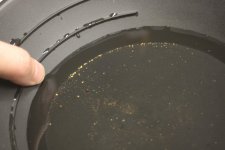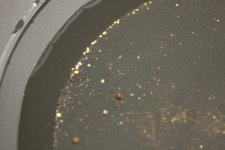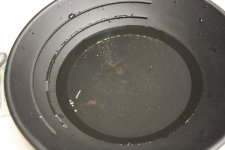dagreat
Jr. Member
- Feb 28, 2010
- 65
- 32
- Detector(s) used
- GPX 5000 with 11" M/DD and GoldScreamer pack
Etrac with 15x18 SEF & 10" Slimeline with inline Sunray
F75 with 11" & 5" DD with inline Sunray for my son
Garrett Infinium with 14" DD, 8" mono and 3x7 DD
- Primary Interest:
- All Treasure Hunting
Hi there,
Gravel Washer took me out to find some good old gold!!! Had a great time... though the climb out of there about killed me! After going through the concentrates, I have to say I am very impressed with how the Bazooka gold trap grabs the gold... and keeps it. I was in a lot of clay most of the day, which took extra time to break it apart and liquidfy it. I love blue clay, but it stinks to get the gold out of it!
Here are some pics of what was left after the going through the concentrates!

and

and

Gravel Washer took me out to find some good old gold!!! Had a great time... though the climb out of there about killed me! After going through the concentrates, I have to say I am very impressed with how the Bazooka gold trap grabs the gold... and keeps it. I was in a lot of clay most of the day, which took extra time to break it apart and liquidfy it. I love blue clay, but it stinks to get the gold out of it!

Here are some pics of what was left after the going through the concentrates!

and

and

Upvote
0






 Please say hi ifn' still home as he said awhile back he was going back to SL-John
Please say hi ifn' still home as he said awhile back he was going back to SL-John
